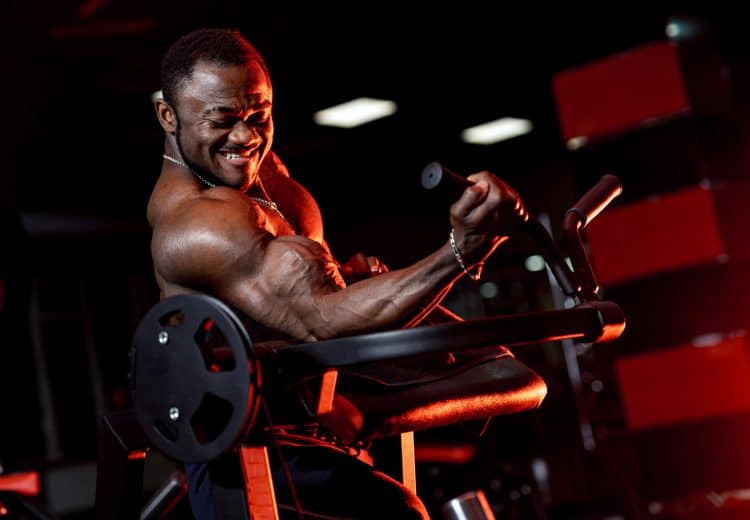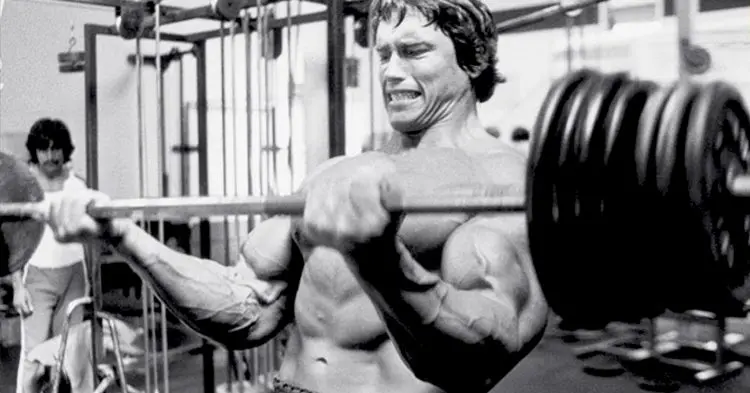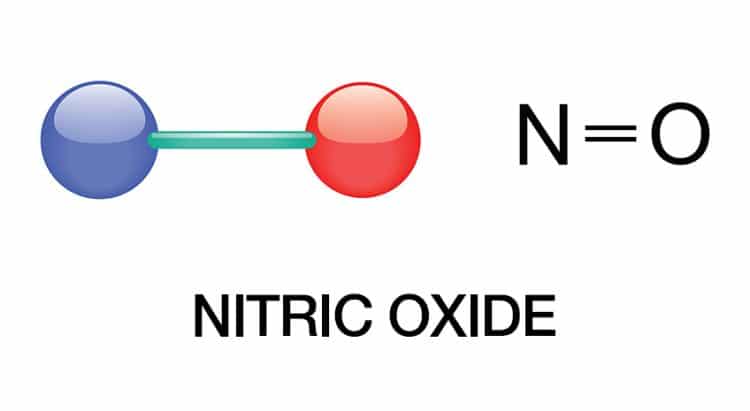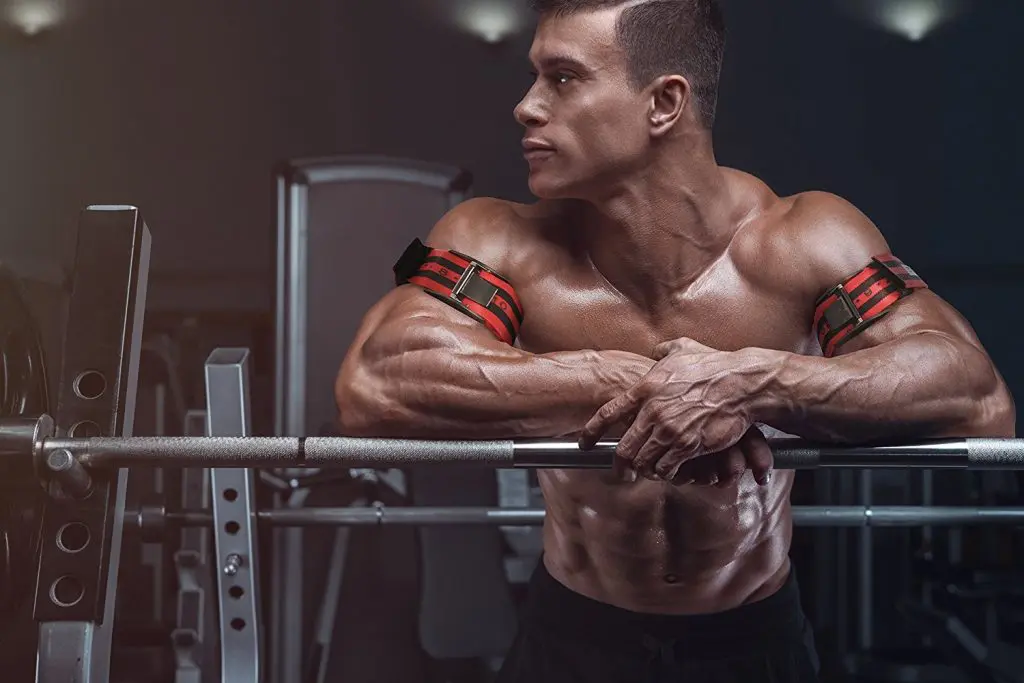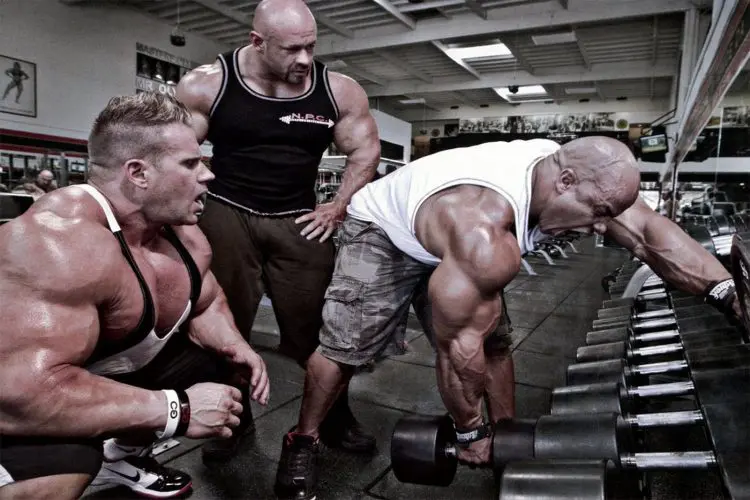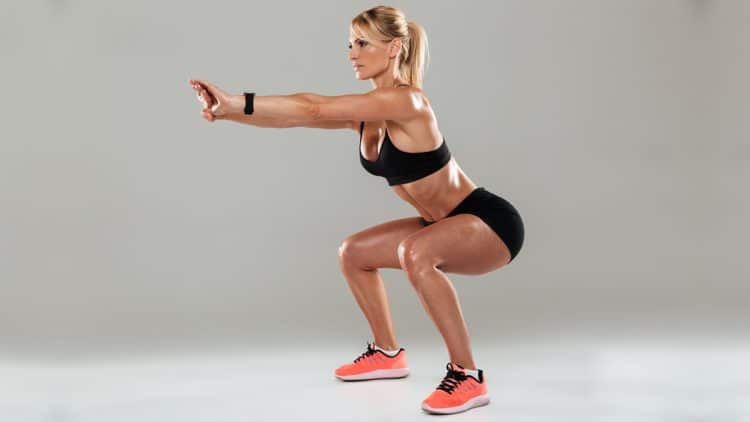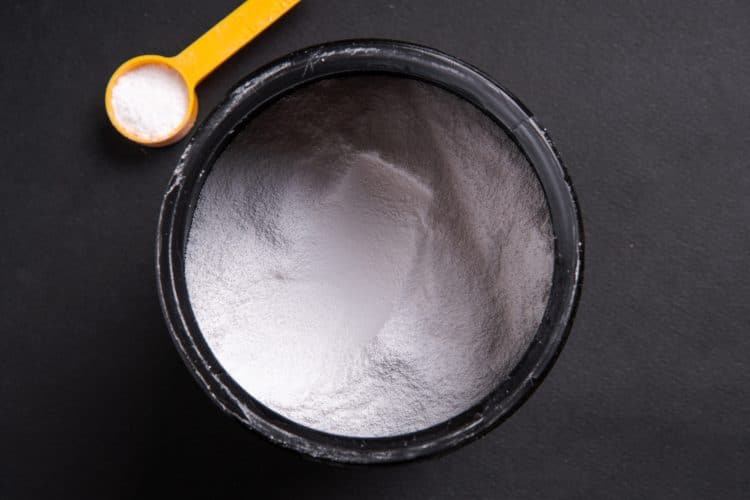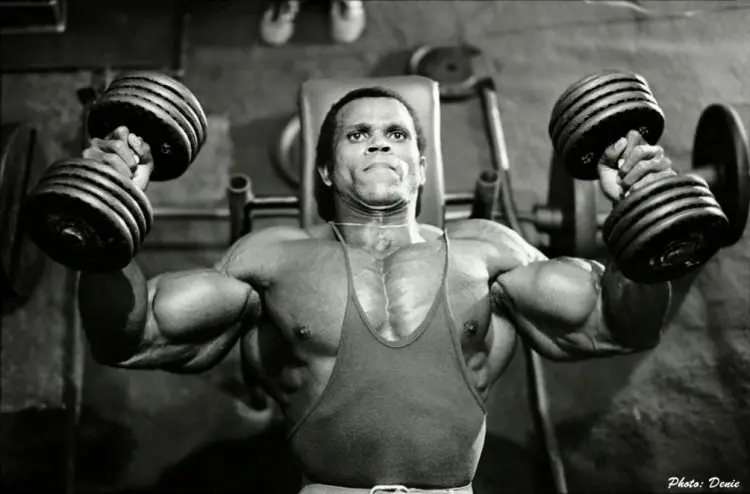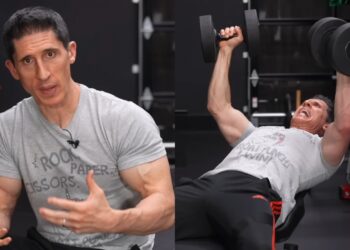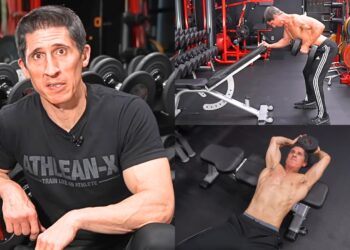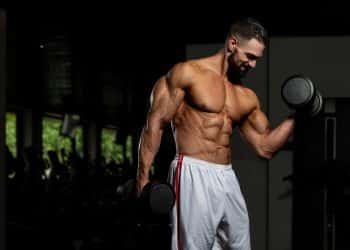Ever since the golden era of bodybuilding, lifters have been chasing the pump. The Austrian Oak Arnold Schwarzenegger even compared getting a pump to having sex! While Arnie’s choice of description may have been somewhat tongue-in-cheek, there is no denying that getting pumped is an essential part of muscle growth.
A lot of exercisers get pumped almost by accident, which means they may not get all the effects that a good pump can deliver.
In this article, we reveal why the pump is so important for muscle growth and the ways to make sure your workout always delivers a skin-splitting, vein-swelling muscle pump.
What Is A Pump?
The pump is the name bodybuilders use for a physiological condition called reactive hyperemia. “Hyper” means greater than usual, while “emia” refers to the blood.
Triggered by an intense workout, the pump describes a massive influx of oxygenated blood into the muscle group you are training.
Level Up Your Fitness: Join our 💪 strong community in Fitness Volt Newsletter. Get daily inspiration, expert-backed workouts, nutrition tips, the latest in strength sports, and the support you need to reach your goals. Subscribe for free!
But what actually causes the pump? Let’s take a look!
When you do any exercise, your muscles contract (shorten), which prevents blood from entering or leaving them. This is a phenomenon called occlusion. Occlusion causes hypoxia or a lack of oxygen.
Metabolic byproducts, including lactic acid, build up within your muscles, which creates fatigue and burning. The longer or more intense your set is, the greater this effect will be, which is why 20-rep sets are usually more painful than sets of 3-5 reps.
Meanwhile, blood builds up in the area leading to the muscle you are training. It’s like damming a fast-flowing river.

When you finish your set and relax, that backlog of blood rushes into your muscles, which is called reperfusion, and makes them swell. Reperfusion is accompanied by vasodilation, meaning your blood vessels open up to accommodate the additional blood volume. That’s why your veins become more prominent when you train.
Related: How to Get a Biceps Vein
As a result, your muscles increase in size, albeit temporarily. However, getting a pump also creates something called sarcoplasmic hypertrophy, which is an increase in non-contractile muscle mass.
So, while your pump will “wear off” after a few hours, there is a residual effect that, if you train often enough, will have a more lasting impact on muscle size.
Getting a pump also has some long-term benefits, including forcing nutrients into your muscle cells for more rapid recovery, stretching the fascia of the muscle from within to allow extra space for growth, and triggering the production of anabolic hormones (1).
In short, the pump doesn’t only have a temporary effect on muscle size but can lead to long-term muscle growth, too.
There is More to Muscle Building Than the Pump!
It’s important to understand that the pump and the associated metabolic stress is not the only trigger for muscle growth. Increases in muscle size are also triggered by mechanical stress (1).
When you lift heavy weights, you’ll undoubtedly feel the tension in your muscles. The heavier the weights, the more tension there is. This mechanical stress causes muscle microtrauma. In simple terms, it damages your muscles at a microscopic level.
Your muscles respond by repairing that damage and growing back bigger and stronger. This is called sarcomere hypertrophy and explains how you can build muscle even if you never get a pump.
That said, for the best muscle-building results, you need metabolic stress AND mechanical tension. The pump (or lifting heavy) will trigger muscle growth, but you’ll make faster progress if your workouts include both of these mechanisms.
Heavy lifting will take care of the mechanical tension, and you’ll get a pump simply by using a standard set and rep protocol. However, there are several things you can do that will help you get an even bigger pump, which may lead to more rapid muscle growth.
10 Ways to Get A Stronger Pump
You should get a decent pump just by doing several sets of the same exercise alternated with a brief 1 to 2-minute rest. Simply lifting weights or doing bodyweight exercises causes occlusion followed by reperfusion.
That said, and given that the pump is one of the two things required for maximal muscle growth, it makes sense to ensure you not only get a pump, but that pump is as strong as possible.
Use the following tips, tricks, and techniques to maximize the pump effect!
1. Do high-rep finishers
It’s irrefutable that heavy weights build muscle, and while lifting heavy does create the mechanical tension needed for muscle growth, the sets are typically too short to produce much of a pump.
So, after you’ve done your heavy lifting for the day, it makes sense to do a few lighter weight, and higher rep sets to trigger a pump.
For example:
- Bench press – four sets of six reps
- Incline dumbbell press – three sets of eight reps
- Chest dips – three sets of 12 reps
- Chest press – four sets of 20 reps
Make the pump sets even more effective by keeping your rests short – 30-60 seconds would be ideal.
2. Use a nitric oxide supplement
Nitric oxide or NO is a substance that dilates or relaxes your blood vessels. With less resistance to overcome, more blood can flow into your muscles, producing a bigger pump.
Level Up Your Fitness: Join our 💪 strong community in Fitness Volt Newsletter. Get daily inspiration, expert-backed workouts, nutrition tips, the latest in strength sports, and the support you need to reach your goals. Subscribe for free!
Foods that are naturally high in nitric oxide include:
- Beets
- Garlic
- Meat
- Dark chocolate
- Leafy green vegetables
- Citrus fruit
- Pomegranate
- Nuts and seeds
- Watermelon
- Red wine
However, you can make doubly sure that you’re getting plenty of nitric oxide by using a supplement. For example, the amino acid L-arginine is converted to nitric oxide shortly after ingestion. Also, many strong pre-workouts include NO to ensure that you get a powerful, long-lasting pump. Pre-workouts contain energizing compounds, so you can train longer and harder than usual.
3. Do some blood flow restriction (BFR) training
BFR training involves tying an elasticated cuff above the muscle you want to train, e.g., your biceps, quadriceps, or calves. This increases occlusion and creates an even more significant build-up of blood.
When the cuff is released, either at the end of your set or once you’re finished with that particular exercise, blood floods into the occluded muscle to create a bigger-than-normal pump.
The main advantage of BFR training is that you get better occlusion from shorter sets and while using lighter weights.
However, this method only works for muscles located in your arms and legs. It cannot be used for your torso, as it would be very difficult, if not highly dangerous, to wrap a tight strap around your chest or neck!
4. Keep your rests short
If you rest too long between sets, the backlog of blood will dissipate, and you’ll lose your precious pump. So, as well as doing high-rep sets, you need to shorten your recovery periods to 30-60 seconds when you’re chasing the pump.
Be warned that, despite using light weights, this will make your workout painful, and your muscles will burn. However, the subsequent pump will be your reward!
5. Try to maintain constant muscle tension
It’s all too easy to sabotage your pump by relaxing your muscles between reps. For example, during biceps curls, you might pause at the bottom of each rep. This allows blood flow to resume, albeit only briefly.
You’ll get a much better pump if you keep your muscles under constant tension. To do this, simply avoid locking out between reps. To the uninitiated, this may look like you are cheating, but it’s actually an excellent way to increase occlusion.
Also, perform your reps in a smooth, piston-like, non-stop manner. There should be no pause at the top or bottom of each rep. Just keep cranking out the reps until the burn becomes intolerable.
6. Try some trisets
Trisets involve doing three exercises back-to-back. Such a high training volume for a single muscle group is bound to produce a significant pump. However, by changing exercises, you’ll also be able to call on different groups of muscle fibers and ensure you exhaust the entire muscle completely.
For example, finish your usual leg workout with a couple of laps of this pump-inducing bodyweight triset:
- Air squats – 30 reps
- Alternating lunges – 15 reps per leg
- Wall squat – 30 seconds
Rest 30 to 60-seconds and repeat twice more and use BFR bands for an even better pump.
7. Do drop sets
Drop sets are one of the simplest ways to get a pump. Simply rep out to failure, reduce the weight by 10-15 percent, and rep out again. Reduce the weight by another 10-15 percent and do another set to failure. Finally, lower the weight one more time and do your final set of reps. This is a triple drop set – there were three weight reductions after the initial set.
Drop sets keep your muscles under tension for a long time, causing a significant build-up of blood, which is then followed by massive reperfusion and an awesome pump.
8. Use isolation exercises
While you can definitely get a good pump with compound exercises, isolation exercises tend to produce better results. With isolation exercises, you can preferentially target specific muscles, control your tempo more easily, and focus on solidifying your mind-muscle connection.
Good pump-inducing isolation exercises include:
- Pec deck
- Cable crossovers
- Cable and dumbbell lateral raises
- Concentration curls
- Triceps pushdowns
- Leg extensions
- Leg curls
- Calf raises
9. Use creatine
Creatine is one of the most researched supplements in the world. It has several beneficial effects, including increasing muscle strength and endurance and resisting fatigue. If you want to train harder or longer, creatine will help.
Another of creatine’s effects is to supersaturate muscle cells with water, which helps increase anabolism and allows for a stronger, longer-lasting pump. However, you MUST increase your water intake when using creatine. Otherwise, you may experience more muscle cramps than usual.
10. Try Serge Nubret’s pump workout
Serge Nubret was a golden-era bodybuilder who rarely lifted heavy weights and, instead, focused almost exclusively on training for the pump. His workouts typically involved 20-30 sets per muscle group with just 30-45 seconds between each one.
For example, when training chest, Nubret would do something like:
- Bench press – 8 sets of 12 reps
- Flat bench fly – 6 sets of 12 reps
- Incline bench press – 6 sets of 12 reps
- Incline fly – 6 sets of 12 reps
- Dumbbell pullovers – 6 sets of 12 reps
While this method may not be for everyone, there is no denying that such a high volume of training will produce an incredible pump.
Muscle Pump – Wrapping Up
While lifting heavy weights builds muscle strength and size, for maximum hypertrophy, you also need a pump. Increasing the blood flow to your muscles helps flood them with anabolic substances and essential nutrients while speeding up the removal of metabolic waste. Pumps feel pretty good, too!
So, don’t just go heavy and then go home; make sure you also include some high-rep, lighter weight sets to pump your muscles to the max. Use the tips, techniques, and strategies in this article to make sure you never fail to get a strong, long-lasting muscle pump.
References:
1 – PubMed: The Mechanisms of Muscle Hypertrophy and Their Application to Resistance Training https://pubmed.ncbi.nlm.nih.gov/20847704/

